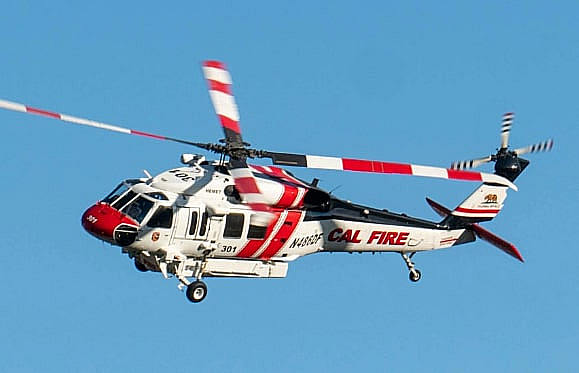Sikorsky S 70: Reinventing Tactical Procedures with Cutting-Edge Modern Technology
Sikorsky S 70: Reinventing Tactical Procedures with Cutting-Edge Modern Technology
Blog Article
Modernized Vertical Lift Platform With Advanced Compound Frameworks and Boosted Precaution
In the world of vertical lift platforms, a substantial change towards innovation has been observed, driven by the integration of advanced composite structures and heightened safety measures. In discovering the convergence of innovation and security in modern lift systems, a compelling narrative arises, showcasing the possibility for transformative developments that provide to the ever-evolving requirements of industrial industries.
Evolution of Vertical Lift Systems

The development of upright lift systems can be traced back to fundamental pulley-block systems and very early lift styles. With time, developments such as hydraulic systems, electrical motors, and progressed control mechanisms have greatly boosted the performance and safety of these systems. Makers have likewise concentrated on boosting the security, reach, and load-bearing capacities of vertical lift platforms to meet the diverse needs of various sectors.
In addition, the integration of smart technologies like sensors, IoT connectivity, and automation functions has further changed the capacities of contemporary vertical lift platforms. These technical improvements not just boost functional performance however likewise guarantee increased security requirements for workers utilizing these systems at numerous elevations. The constant development of vertical lift systems emphasizes their crucial function in enhancing vertical wheelchair throughout markets.
Combination of Advanced Compound Structures

Moreover, the use of advanced composite materials allows for even more complicated and optimized structural layouts, making it possible for designers to tailor the system's properties to fulfill certain efficiency demands. Overall, the unification of sophisticated composite structures in modern-day upright lift platforms represents a substantial improvement in aerospace technology, leading to more efficient, reputable, and safer aerial transport systems.
Improved Safety Measures Application
Implementing enhanced security procedures is essential in guaranteeing the optimal efficiency and integrity of modern-day upright lift platforms. One key aspect of improved security procedures is the combination of innovative sensor innovations to keep an eye on different specifications in real-time.

Market Applications and Benefits
With improvements in technology and design, modernized upright lift platforms have discovered varied applications throughout various sectors, using significant advantages in efficiency and efficiency. In the production sector, these systems improve the procedure of transferring hefty products and equipment within centers, minimizing hand-operated handling and enhancing functional performance. The construction sector benefits from vertical lift systems by allowing employees to gain access to elevated areas safely and effectively, boosting overall project timelines. Warehousing and logistics firms utilize these platforms to enhance storage area application and facilitate quicker picking and packing processes.
In addition, upright lift platforms play an essential function in the maintenance and repair work of infrastructure such as bridges, power lines, and buildings, allowing technicians to reach hard to reach locations effortlessly (sikorsky s 70). The air travel sector likewise leverages these platforms for aircraft upkeep and setting up tasks, improving process efficiency and ensuring employee security at heights. In general, the extensive adoption of up-to-date vertical lift platforms throughout markets emphasizes their adaptability and the considerable improvements they offer different operations
Future Trends in Lift System Modern Technology
Integrating advanced automation and smart functions, lift click here for info platform technology is positioned to revolutionize vertical transport systems in the future. One essential fad is the combination of Internet of Points (IoT) technology, making it possible for lift platforms to connect real-time data for anticipating maintenance, optimizing efficiency, and enhancing safety. Man-made intelligence and equipment discovering formulas are likewise being incorporated to examine patterns, predict prospective issues, and enhance performance. The usage of innovative materials such as carbon fiber compounds is on the rise, providing raised resilience and stamina while lowering overall weight. Boosted precaution, consisting of biometric verification and emergency reaction systems, are coming to be basic functions to make certain guest safety and security. Furthermore, adjustable arrangements and modular layouts are gaining popularity, permitting for better adaptability to various environments and demands. As lift platform innovation remains to advance, these fads are established to form the future of upright transportation, making it much more effective, risk-free, and easy to use.
Verdict
In final thought, the up-to-date vertical lift system showcases the development of technology in the industry. By incorporating advanced composite frameworks and improved precaution, this system supplies enhanced performance and security for various applications. The sector can benefit substantially from these improvements, and future trends in lift system technology are most likely to continue improving upon these technologies for even higher success and effectiveness.
In the realm of vertical lift platforms, visit site a substantial shift towards innovation has been observed, driven by the integration of innovative composite frameworks and increased safety and security measures. The constant advancement of vertical lift systems underscores their vital duty in enhancing vertical flexibility across sectors.

The incorporation of sophisticated composite frameworks in modern-day upright lift platforms has dramatically enhanced their structural stability and efficiency abilities. By incorporating these advanced composites into the style and building of upright lift systems, suppliers can decrease general weight, increase load-carrying capability, and improve the you can check here platform's longevity and longevity.
Applying boosted safety and security measures is vital in guaranteeing the optimum efficiency and dependability of contemporary vertical lift platforms.
Report this page